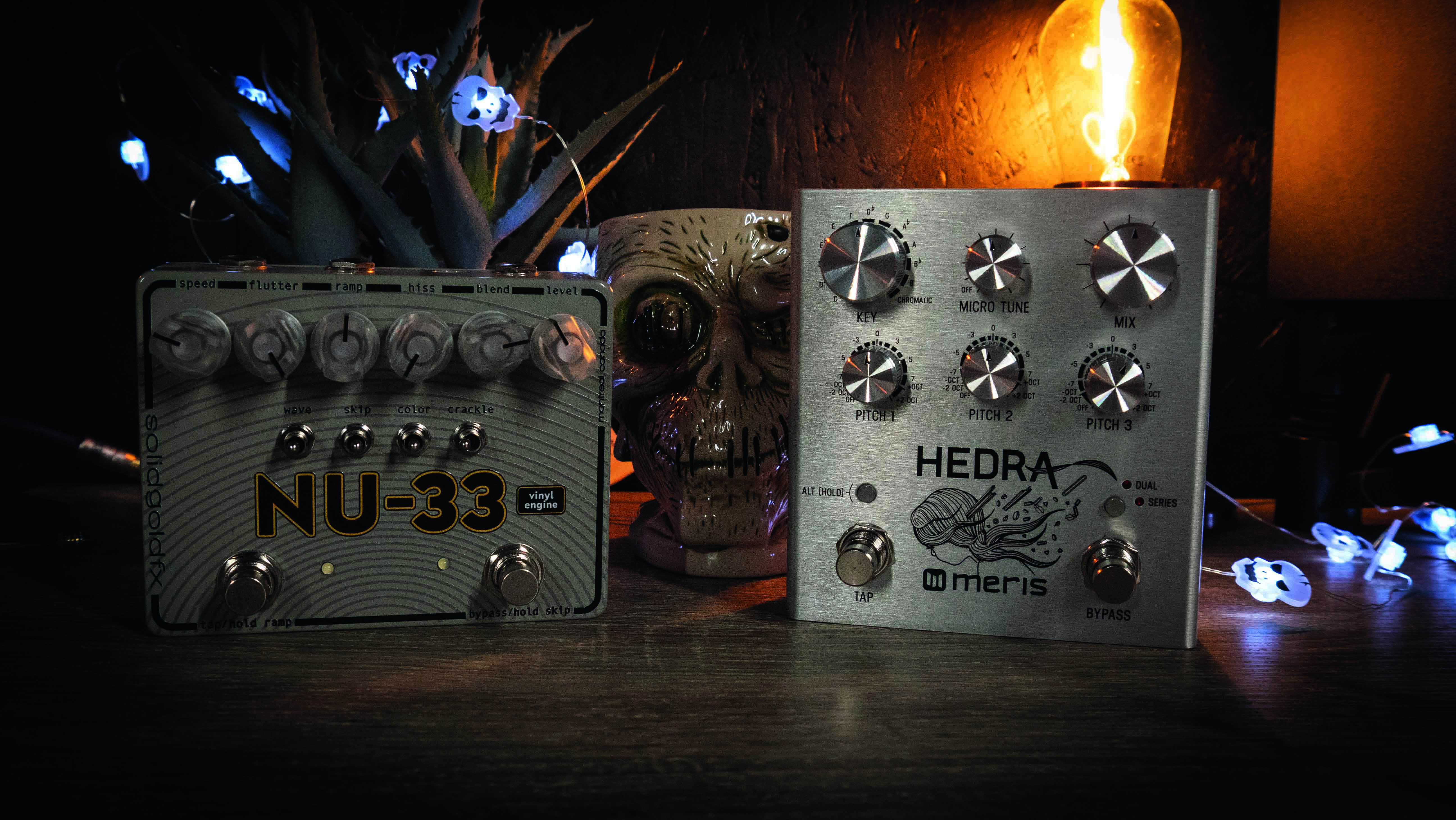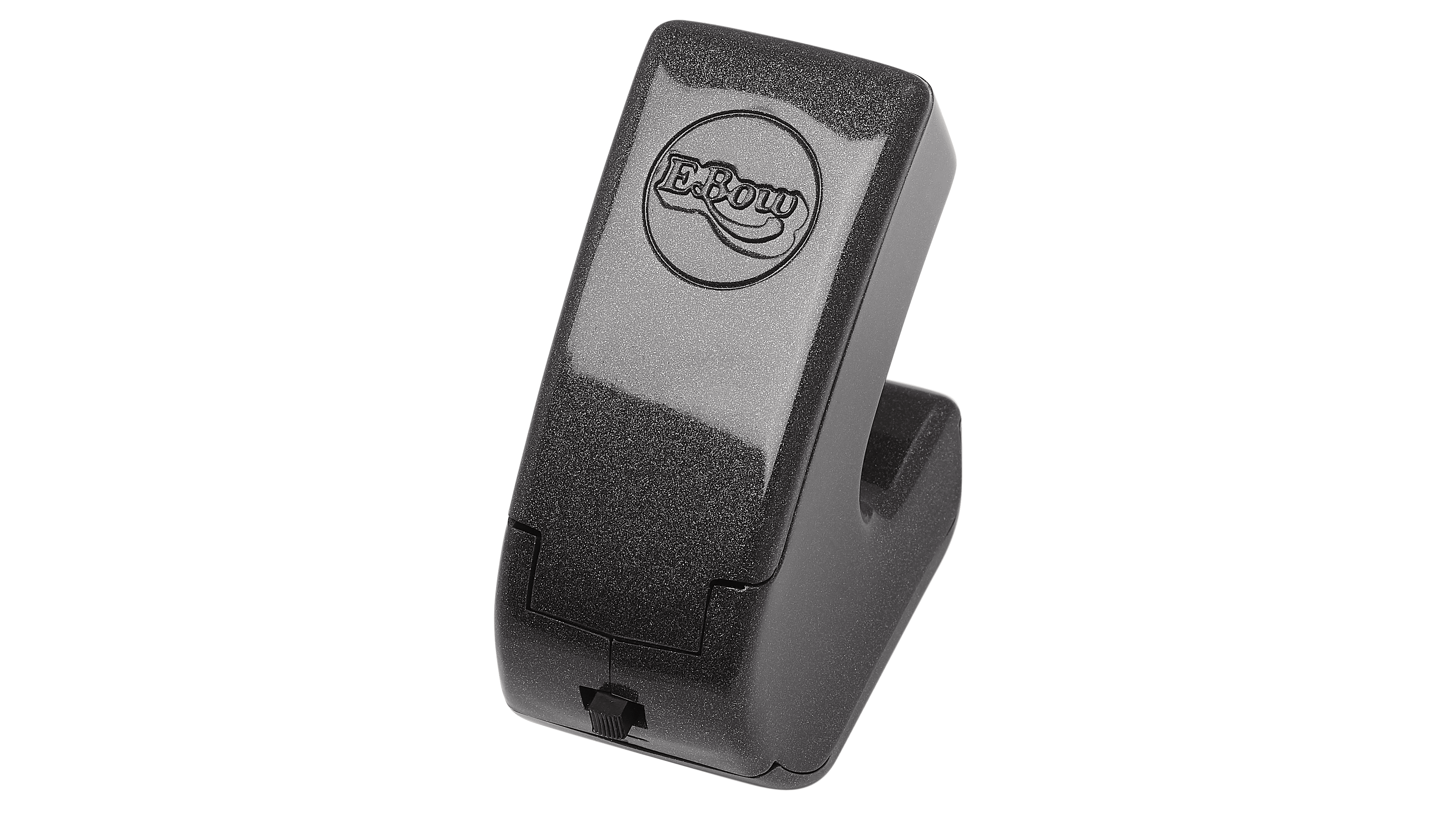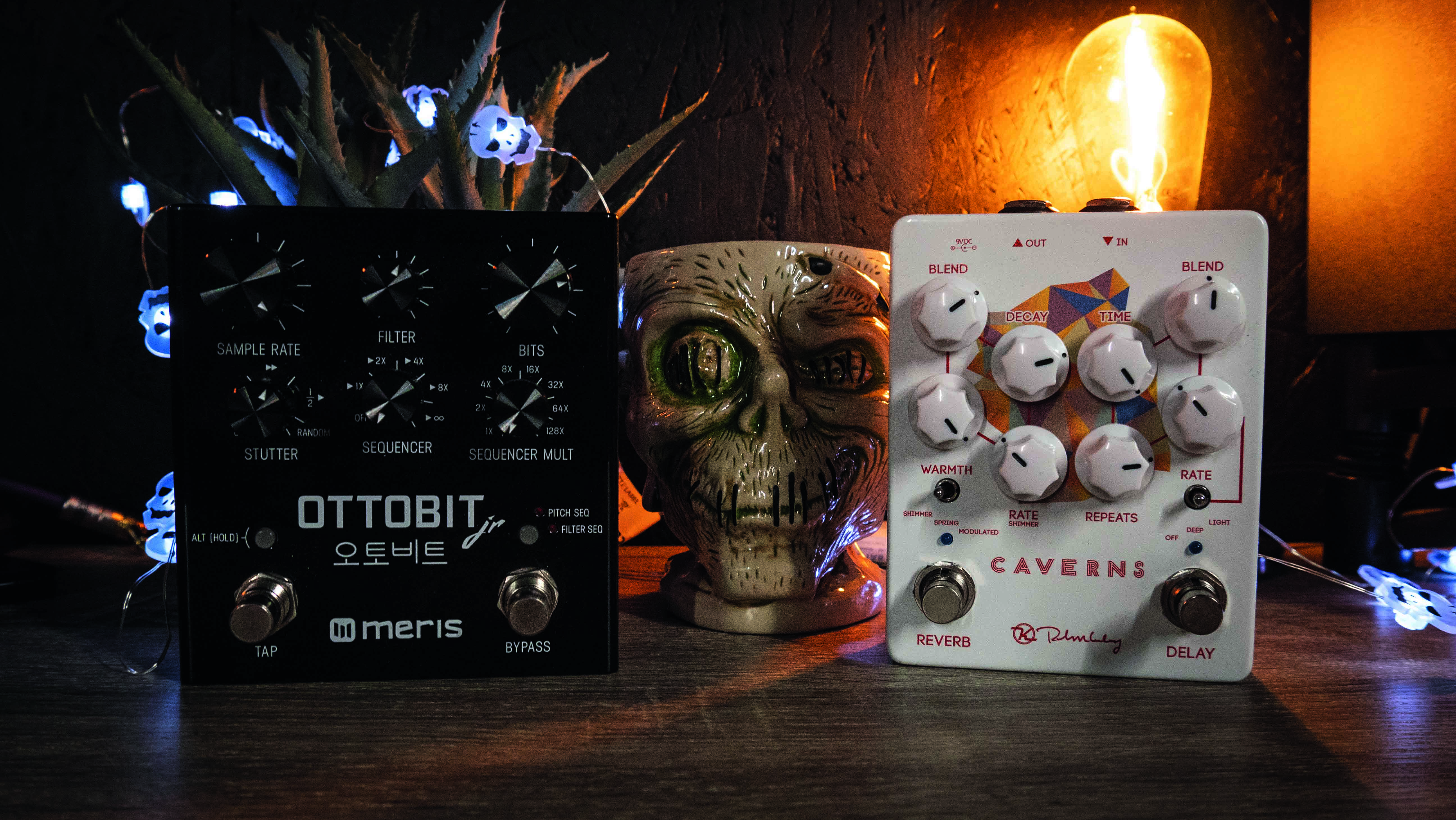How to create sinister guitar tones with your effects pedals
Trick or treat? Stefan Fast of YouTube channel ThePedalZone shows you how to coax some spine-chilling tones from your Pedalboard

We all know that music and sounds hold immense emotional powers, and that also goes for the power to creep us all out like crazy. For instance, take horror movie soundtracks. Here, the music often acts as the monster much more than the on-screen monster itself as the soundscapes can hard-code tension, dread and drama into imagery that doesn’t visually carry it.
Taking one classic example, without its absolutely soul-crushing and ominous score by Wendy Carlos, the opening title scene for The Shining would just have been a stunningly beautiful drive through majestic forests and mountains. It’s the eerie sounds that quickly tell us that danger is hidden beneath the beauty.
So, I thought it could be fun to do a little ‘Halloween Pedal Special’ and check out some effects pedal combinations that’ll let you scare the living daylights out of your neighbours.
Now, a pedal and its sound is rarely scary by itself, but it can really help augment the darkness you’re trying to evoke through your composition.
The true scariness often comes from the intervals and chords played, so make sure to feed the upcoming pedal combinations some minor 2nd intervals (you know, the Jaws interval), low sustaining drones, minor chord and diminished chord progressions.
Terrifying theramins and disturbing drones

To me, pitch-shifting and modulation are cornerstones in scary sound designs because these effect categories hold really transformative abilities on guitar.
For instance, try using a whammy-like pitch-shifter set to an octave up, selecting a dry/wet mix that 100 per cent favours the pitch-shifted signal. Now, mix that with a fast quivering vibrato and you can conjure some really eerie and convincing theremin-like sounds as you glide the pitch-shifted signal in – especially if you use something like an EBow to sustain the tone.
Want all the hottest music and gear news, reviews, deals, features and more, direct to your inbox? Sign up here.

You can also go the other way and set the pitch-shifter to an octave down, mixing that with an extremely slow and deep vibrato. If the vibrato has a random mode, that’s even better.
This can create some really dark, disturbing drones full of tension as you hear the pitch slowly rise, fall and randomly skip around. Mixing a 5th above with a super-slow flanger can also create some really alien and mysterious sci-fi textures.
Dark atmospheres

A good dose of delay and reverb will always make an atmosphere more haunting
A good dose of delay and reverb will always make an atmosphere more haunting, but you already knew that, so let’s get a bit weirder here than just adding delay and reverb to a scary progression. Sending a long modulated ambient reverb into the sample-reducing magic of a bitcrusher can create some really brooding textures.
I recommend placing the bitcrusher after the reverb as this allows you to slowly disintegrate your reverb pads in real-time by manipulating the sample rate on the fly.
You can also create some really terrifying tones by placing a ring-modulator after the reverb. If you run a high mix and explore the higher frequency areas of the ring-mod, you can create some spooky resonant tones reminiscent of apocalyptic gongs, sinister singing bowls and howling hurricanes.
If you have a delay pedal with an effects loop then try using the ring-modulator there. This will create delay repeats with mysterious bell-like qualities, which can evoke some really eerie percussive landscapes, especially when used with high-delay feedback settings.
Reverse it!

We’ve all heard the stories about certain albums played backwards revealing dark messages. I don’t know if there’s any truth to these bits of folklore, but I do know that everything just sounds way cooler and more interesting in reverse.

If you have a reverse delay then set it to the longest possible delay time with a healthy dose of feedback and you have a foundation for some really cool pseudo-looping samples.
If you have a looper with onboard reverse and half-speed effects, that’s a perfect tool for creating dark dronescapes, too. You don’t even have to record musical notes. Pick scrapes, percussive taps or bell-like plucks behind the nut or bridge can all turn into a horrifying textural tapestry when reversed, slowed down and fed through some reverb.
March of the machines

Mixing an octa-fuzz with a tremolo pedal can create some really dirty, stabby sequencer-esque sounds
When sounds become inorganic and borderline robotic, we humans tend to take a step back because we can no longer mirror our own being within them. For this reason, mechanical tones often have an uncanny effect on us.
Mixing an octa-fuzz with a tremolo pedal can create some really dirty, stabby sequencer-esque sounds. Don’t hold back on the gain on the fuzz, and make sure to use a square or sawtooth wave and max out depth on the tremolo to get those really synthetic choppy tones.
If you want to go even further along the spooky spectrum here then try throwing in a filter pedal, such as a phaser or envelope filter, between the fuzz and tremolo. This setup will give you some really aggressively sliced sweeps.

